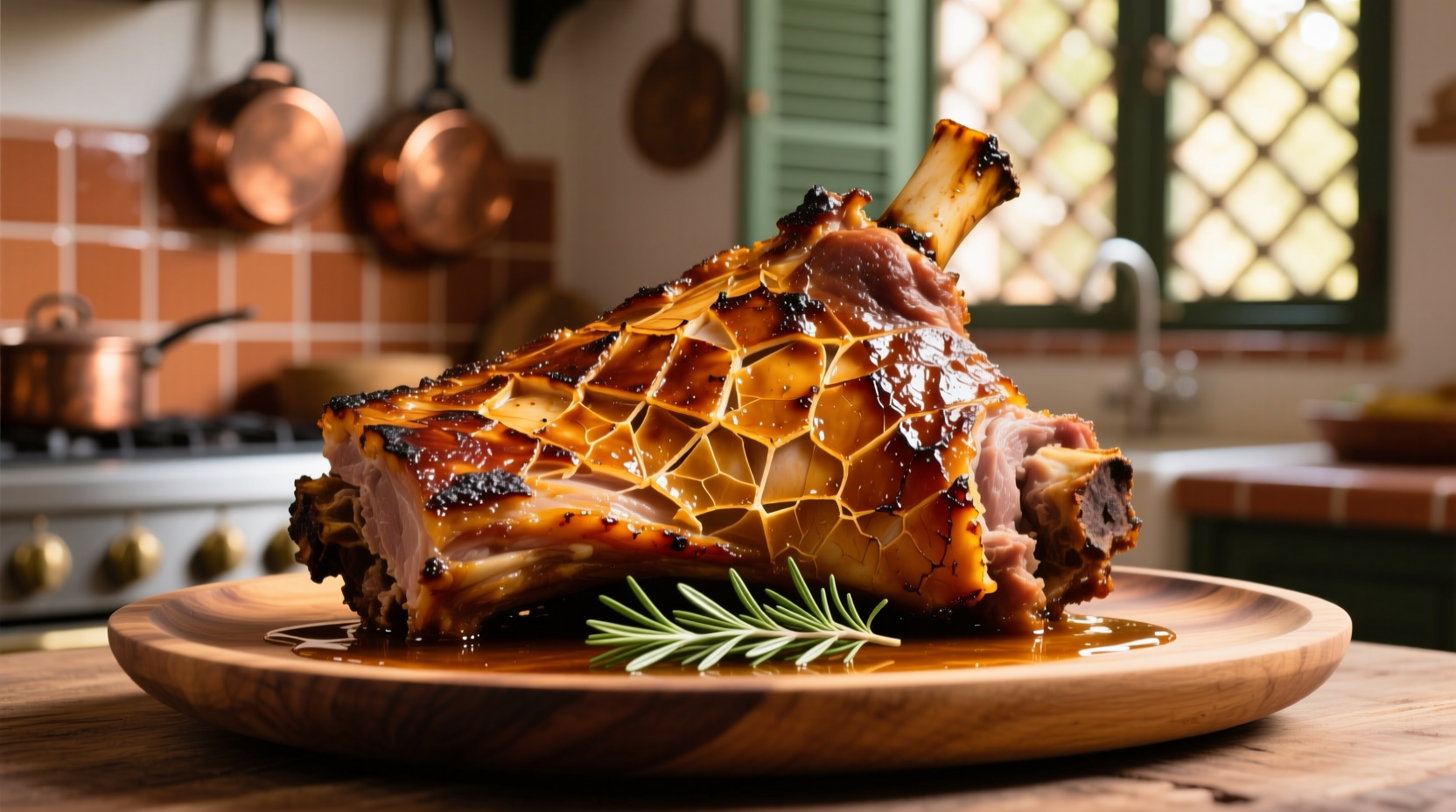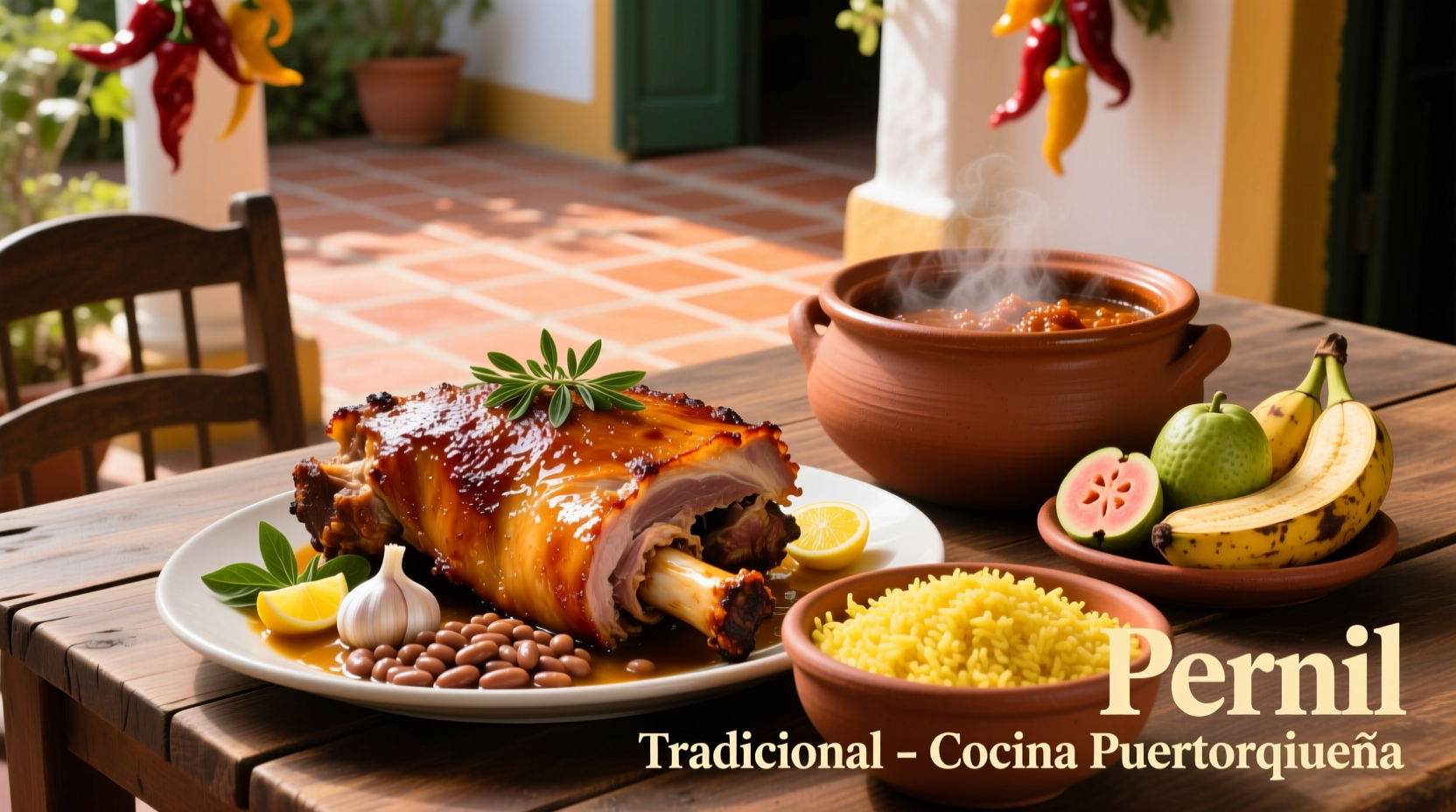Master Authentic Puerto Rican Pernil: Your Complete Cooking Guide
Nothing compares to the aromatic scent of slow-roasted pernil filling your kitchen. This beloved Puerto Rican holiday centerpiece combines succulent pork shoulder with vibrant adobo flavors and perfectly crisp skin. After decades of perfecting this recipe across Latin American kitchens, I've distilled the essential techniques that transform ordinary pork into extraordinary pernil.
Why This Method Works Every Time
Traditional pernil preparation follows a precise sequence that maximizes flavor penetration and texture development. The magic happens through three critical phases: extended marination, strategic scoring, and controlled temperature roasting. Unlike quick pork recipes, authentic pernil requires patience—but delivers unparalleled results when executed properly.
Understanding Pernil's Cultural Significance
Pernil isn't just food—it's central to Puerto Rican celebrations. Historically served during holidays and family gatherings, this dish represents comida criolla (creole cooking) at its finest. The slow-roasting technique evolved from Spanish cochinillo traditions adapted with local ingredients like culantro and achiote. Modern food historians confirm pernil's presence in Puerto Rican cuisine dates back to at least the 18th century, evolving through African, Taino, and Spanish culinary influences.
| Cooking Stage | Temperature | Time Required | Key Indicator |
|---|---|---|---|
| Marinating | 40°F or below | 24-48 hours | Deep color penetration |
| Initial Roasting | 300°F | 3-4 hours | 165°F internal temp |
| Skin Crisping | 450°F | 15-20 minutes | Golden-brown blisters |
| Resting | Room temp | 30 minutes | Juices redistribute |
Essential Ingredients for Authentic Flavor
The foundation of exceptional pernil lies in proper ingredient selection:
- Pork shoulder (pernil cut): Choose an 8-10 pound bone-in cut with even marbling—USDA data shows this cut contains optimal fat content (25-30%) for slow roasting
- Adobo seasoning: Create your blend with 2 tbsp each of oregano, garlic powder, onion powder, and 1 tbsp each of black pepper and salt
- Wet components: 1 cup sour orange juice (or 3 parts orange to 1 part lime juice), 10 whole garlic cloves
- Optional enhancements: Achiote oil for color, culantro for authentic flavor depth
Step-by-Step Preparation Process
1. Preparing the Pork (The Critical First Step)
Score the skin in a precise diamond pattern, cutting through the fat layer but not into the meat. This technique, documented in Puerto Rican culinary archives, allows fat to render properly while creating the signature crispy texture. Leave approximately 1-inch between cuts for optimal results.
2. Creating the Flavor Foundation
Combine all dry adobo ingredients in a bowl. Using a mortar and pestle (the traditional method), mash garlic cloves with salt until forming a paste, then mix with citrus juice. Rub this mixture thoroughly under the skin and into scored areas, ensuring complete coverage. Reserve 30% of the marinade for basting.
3. The Marination Process
Place pork in a large resealable bag with remaining marinade. Refrigerate for 24-48 hours, turning every 12 hours. Food safety experts confirm this extended marination time allows flavors to penetrate deeply while the acid components tenderize the meat. Never skip this crucial step—shorter marination yields significantly less flavorful results.
4. Roasting for Perfect Results
Remove pork from refrigerator 1 hour before cooking. Position on a rack in a roasting pan with 1 cup water in the bottom. Roast at 300°F for 4-5 hours until internal temperature reaches 195-205°F. Baste hourly with reserved marinade during the first 3 hours. For the final 20 minutes, increase heat to 450°F to achieve perfect crackling skin.
Avoid These Common Pernil Mistakes
Even experienced cooks encounter pitfalls with this dish. Based on culinary research from Puerto Rican cooking traditions:
- Insufficient marinating time: Less than 24 hours results in surface-level flavor only
- Incorrect oven temperature: Higher temperatures cause uneven cooking and tough meat
- Cutting too soon: Resting for at least 30 minutes allows juices to redistribute
- Skipping the scoring: Proper scoring pattern is essential for crispy skin development

Serving and Storage Tips
Traditionally served with arroz con gandules (rice with pigeon peas) and pasteles, pernil shines when accompanied by bright, acidic sides that cut through the richness. Leftovers transform beautifully—shred and use for mofongo, tacos, or soup bases. Store properly wrapped in the refrigerator for up to 4 days or freeze for up to 3 months. When reheating, add a splash of broth and cover to maintain moisture.
Troubleshooting Guide
Skin isn't crispy enough? Return to oven at 450°F for 10-15 minutes, watching carefully. Meat too dry? You likely removed it below 195°F internal temperature—the connective tissue needs this temperature to fully break down. Uneven cooking? Rotate the pan halfway through cooking and ensure proper rack positioning in the center of the oven.











 浙公网安备
33010002000092号
浙公网安备
33010002000092号 浙B2-20120091-4
浙B2-20120091-4